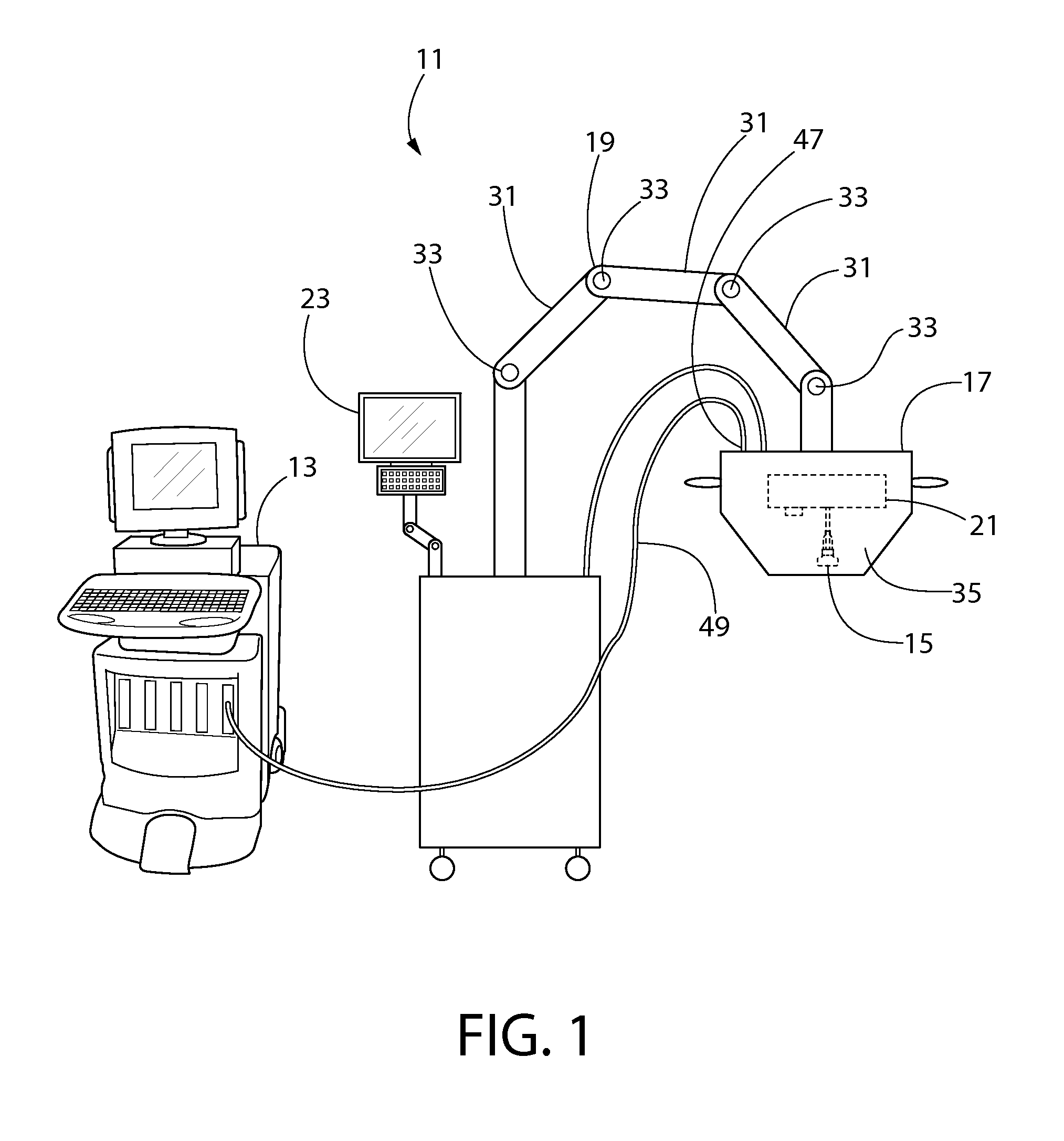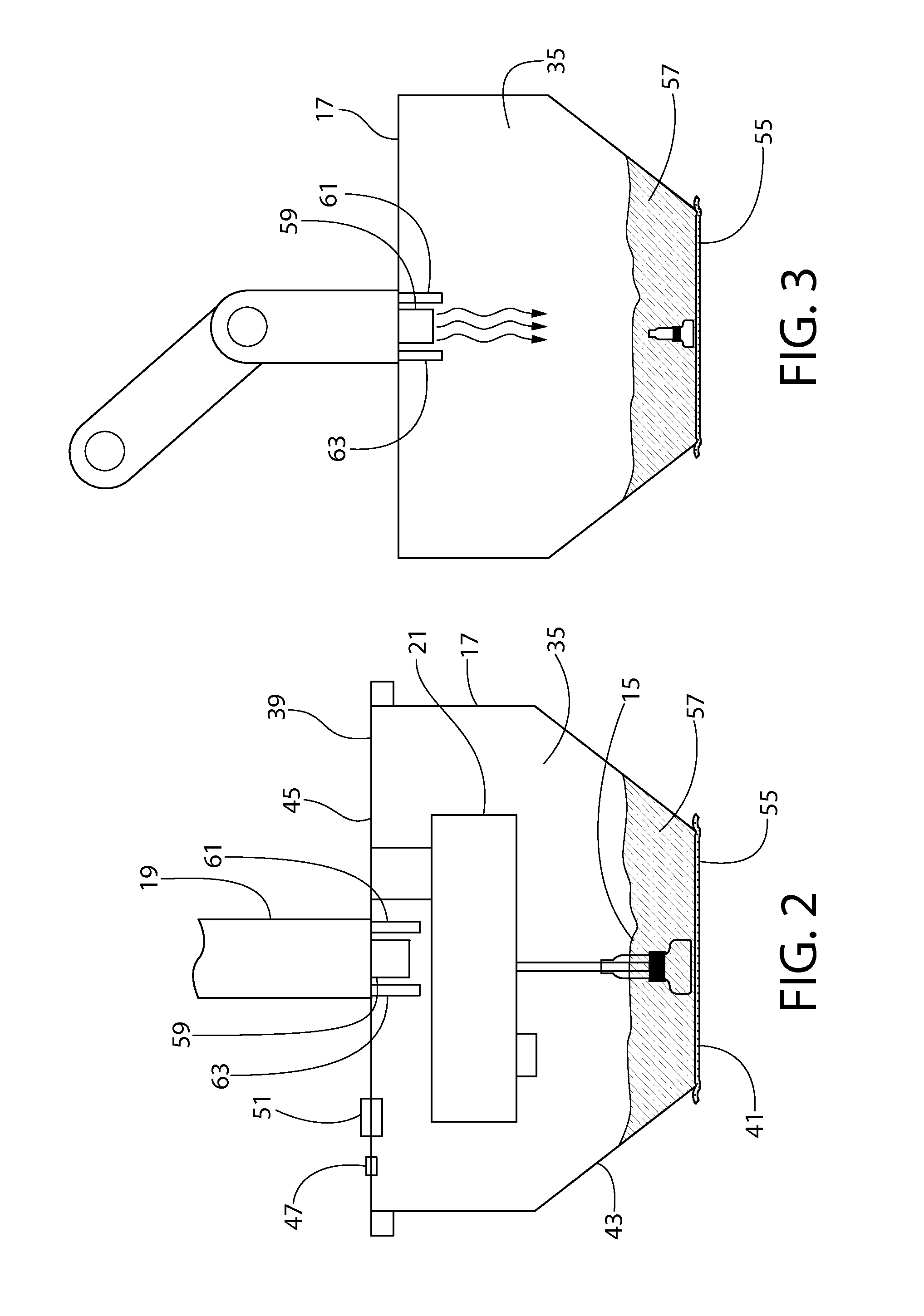System and method for performing an ultrasound scan of cellular tissue
a technology of ultrasound and cellular tissue, applied in ultrasonic/sonic/infrasonic image/data processing, tomography, applications, etc., can solve the problems of system time needed to perform the scan, process can still be somewhat slow, and difficulty in identifying abnormalities
- Summary
- Abstract
- Description
- Claims
- Application Information
AI Technical Summary
Benefits of technology
Problems solved by technology
Method used
Image
Examples
Embodiment Construction
[0026]Turning in detail to the drawings, FIG. 1 illustrates a system 11 for performing an ultrasound scan of cellular tissue. The system 11 includes an ultrasound scanning device 13, which includes an ultrasound probe 15 and is configured to generate a plurality of cross-sectional images of cellular tissue. Unless otherwise indicated in the claims, the ultrasound scanning device 13 may be of a type that is known in the art, which includes a programmable processor, a volatile memory, a non-volatile memory, and programming which is used by the programmable processor to control the ultrasound probe 15, collect ultrasound scan data from the ultrasound probe 15, and to display the ultrasound scan data as images in a desirable format. The processing of ultrasound scan data is described in further detail below.
[0027]The ultrasound probe 15 is disposed within the probe enclosure 17, which is supported by an armature 19. The probe enclosure 17 is moved by the armature 19 into a position adja...
PUM
 Login to View More
Login to View More Abstract
Description
Claims
Application Information
 Login to View More
Login to View More - R&D
- Intellectual Property
- Life Sciences
- Materials
- Tech Scout
- Unparalleled Data Quality
- Higher Quality Content
- 60% Fewer Hallucinations
Browse by: Latest US Patents, China's latest patents, Technical Efficacy Thesaurus, Application Domain, Technology Topic, Popular Technical Reports.
© 2025 PatSnap. All rights reserved.Legal|Privacy policy|Modern Slavery Act Transparency Statement|Sitemap|About US| Contact US: help@patsnap.com



